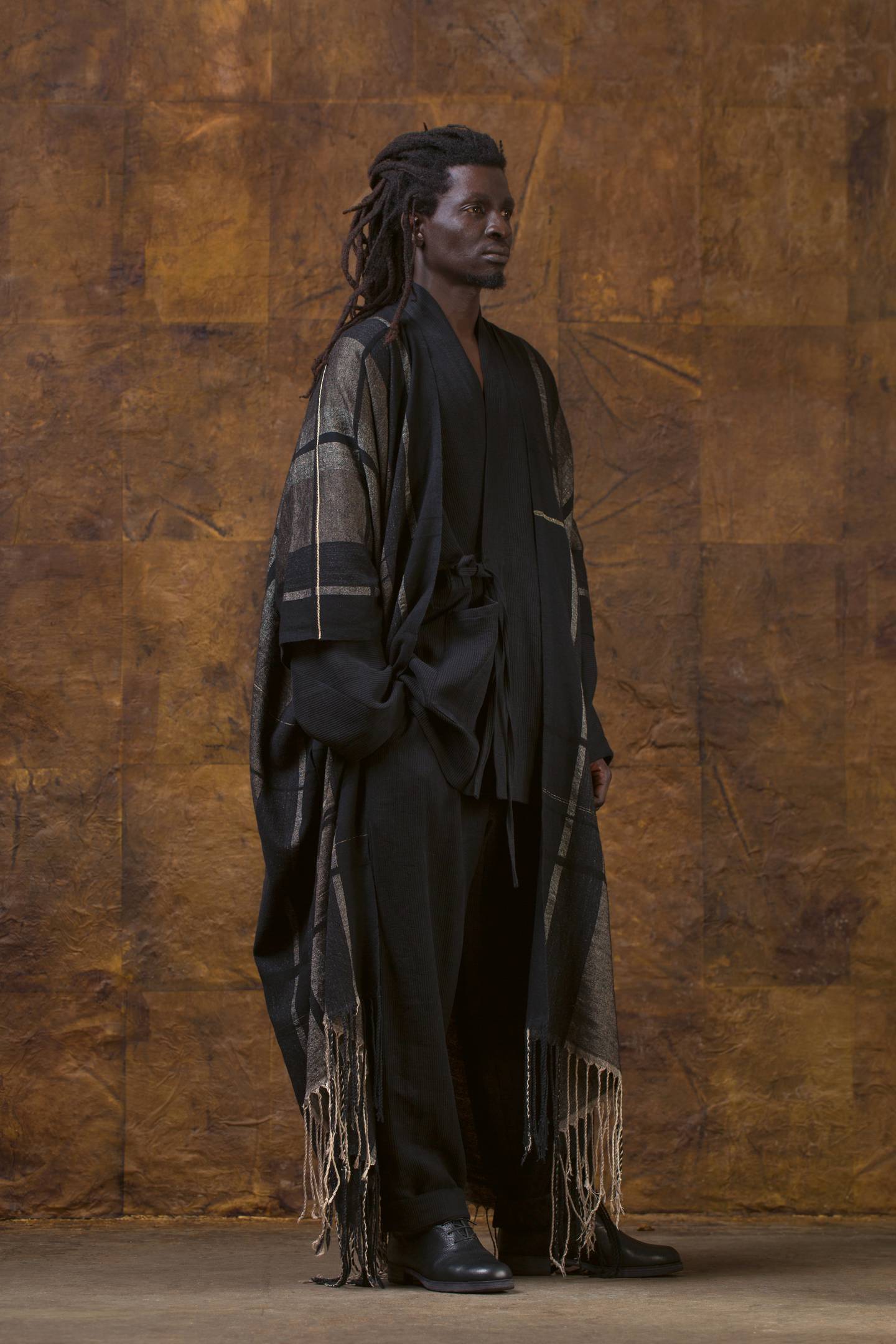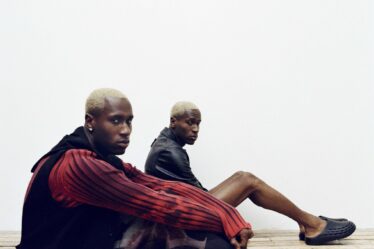
FLORENCE — The Belgian designer Jan-Jan Van Essche is an unconventional choice for a guest designer at Pitti Uomo, the semiannual menswear trade show that began yesterday. Pitti’s organisers are good at identifying emerging talent, but rarely have they lent their platform to a designer so leftfield.
Van Essche has remained firmly underground since launching his eponymous, quiet luxury label twelve years ago. Though he has a following among a handful of menswear editors and is stocked at 40 retailers, including Dover Street Market and Ssense, his brand has never been part of fashion’s mainstream and today’s Pitti Uomo show will be his first.
At the heart of Van Essche’s work is what he calls “inverse multiculturalism.” His clothes draw on inspiration from Southeast Asia, Africa and the Middle East, where traditional garments often offer a sense of looseness and concealment not typically found in commercial fashion.
“What fascinates me is how you can find similar garments in many cultures; for instance, there are constructions methods of clothing that you can find from Turkey to Asia to Africa, and what triggers me a lot is that these same things were invented in different places at the same time, which for me, points to their intrinsic humanity,” says Van Essche.
The results are minimalist if unsimple. Van Essche favours silhouette and texture over embellishment and motifs, an approach that has no doubt helped him avoid being accused of “cultural appropriation.” He strips away unnecessary seams and lets the draping shape the garment. He keeps the colour palette muted and many of the fabrics he uses — 80 percent of which are sourced in Japan — come undyed or even straight off the loom, unprocessed.
Whereas today’s fashion is fast, Van Essche’s approach is deliberately slow. Since his line’s inception, Van Essche has eschewed seasonal collections, instead opting to present “an annual wardrobe.” His first collection was called “Yukkuri,” Japanese for “take it easy.”
“Not only do Jan-Jan’s clothes look like nothing else, they’re made like nothing else,” says Noah Johnson, global style director at GQ. “I was just floored by his skill and his singular aesthetic vision. And of course he does it all outside the traditional fashion system: a true independent.”
With his partner Piëtro Celestina, Van Essche operates Atelier Solarshop, a store in Antwerp’s Seefhoek district, a predominantly immigrant neighbourhood, where his own clothes are displayed alongside a selection of other slow fashion brands, like Cosmic Wonder and Mittan, and homewares sourced on the couple’s trips to remote parts of the world.
Van Essche, 42, was born in Antwerp. He graduated from the famed fashion department of Antwerp’s Royal Academy of Arts in 2003. Before launching his brand, he worked with his father and three brothers on set designs for Belgium’s television and film industry, as well as in mass-market fashion. “It’s important to know what you don’t want to do,” says Van Essche.
Though Van Escche began his fashion career in menswear — “I don’t pretend to know how a woman feels in clothes,” he says — he has slowly built a loyal clientele of women and now creates clothes that he sees as genderless. “The construction for male and female pieces is the same. The proportions might differ and the surface might differ in the sense of the drawing or the size. I don’t like the word, but ‘ethnic’ clothing doesn’t have breast darts or it’s not cinched in the waist. It’s the way you drape it around your body that makes it more feminine or more masculine. And this is something that you can easily do with my clothes,” says Van Essche.
Tonight’s show is a coming out party of sorts. “Doing a show was never within possibility as a small independent brand. I would lie if I said it’s not a dream,” says Van Essche. The fluidity of his clothes almost requires them to be seen in motion. “We’ve been trying to capture movement by creating films, and much of the team that’s been working on our films is working on the show.”
Whether the exposure will give Van Essche’s business a boost remains to be seen. He has no grand expansion plans for the label. “Being a small independent brand can be quite scary,” says Van Essche. “If we could continue what we do in a more sustained way that would give us a bit more stability and freedom, that would be great. I don’t want to become a manager; I want to keep on making my patterns. But it would be amazing if the brand could reach more people without us having to change what we do.”



